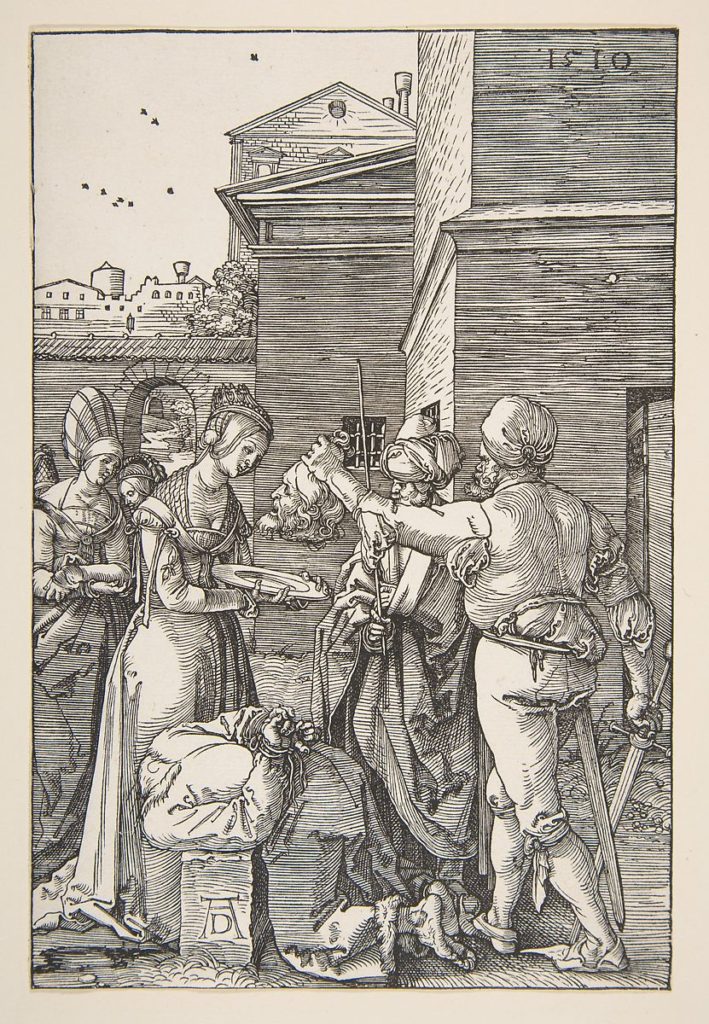Pointing Towards the Light of Christ

The Nativity of St. John the Baptist, celebrated on June 24th, has been highly regarded throughout the entirety of Church history. This is due to both its commemoration of one of the most highly regarded prophets and saints within all of Scripture and its celebration of a man whose entire life pointed mankind towards the Light of Christ.
All four gospels relay information about St. John’s life and teaching. According to St. Luke, John’s birth was foretold to the aging Zechariah by the Archangel Gabriel. However, the old man did not believe the message, and so he was rendered speechless until the time of his birth (Luke 1:5-25). Upon the birth of his son, Zechariah’s speech was restored, and he immediately sang a hymn of praise (called the Benedictus), which foretold the future ministry of Jesus (Luke 1:57-79). Zechariah’s canticle is still used frequently in the services of the Church, such as the Lutheran Service Book’s setting of Morning Prayer.
St. John’s life intersected with our Lord’s throughout his time on earth. The first instance can be found in the Gospel of Luke, which recounts that baby John “leapt” in his mother Elizabeth’s womb when the Virgin Mary, herself pregnant with our Lord Jesus, greeted her (Luke 1:41).
When he was about 29 and roaming the wilderness of Judea, John began preaching repentance and performing baptisms, witnessing to the coming of Jesus (Matthew 3:1-5). It was here in the wilderness that John’s life once again intersected with Jesus, as he baptized Christ himself on the banks of the Jordan River, an event that marked the beginning of Christ’s public ministry (Matthew 3:13-17).
In an infamous biblical scene, St. John the Baptist was put to death by Herod Antipas because of the vengeful request of his step-daughter Salome and her mother Herodias (Mark 6:21-29). John’s martyrdom not only marked the end of his prophetic ministry but also intersected Jesus’ life in one final and crucial way: it foreshadowed Christ’s coming betrayal and his own impending death.

A Brief History
St. John the Baptist is one of the only saints in the Church Calendar whose festival commemorates his birth instead of his death. The date falls three months after the celebration of the Annunciation on March 25th, when in addition to announcing the birth of our Lord, the Archangel Gabriel told the Virgin Mary that her cousin Elizabeth was in her sixth month of pregnancy. This feast thus falls six months before the celebration of our Lord’s nativity, reflecting the biblical narrative of the two births.
One of the highest-ranking and oldest feasts of the Church Year, the Nativity of St. John the Baptist has been long celebrated throughout the world, having been established as early as the fourth century. Later on in the Middle Ages, as Christianity spread all over Europe, the Feast of St. John the Baptist even began to supersede the popular June celebration of the midsummer solstice. Consequently, the long-celebrated tradition of building midsummer bonfires towards the end of June became the tradition of St. John’s fires.
Marking the traditional Christian celebration of the summer solstice, this feast’s location in the solar year demonstrates a further connection with the annual celebration of our Lord’s birth, which falls close to the winter solstice. The connections between the festivals doesn’t end there: the symbol of St. John’s fires shows that St. John’s life, teaching, and intersections with Jesus can also be seen as a lamp burning bright within the world, directing the gaze of all observers towards the one true light of Jesus Christ.
Martin Luther also saw the importance of the connection between these men, writing a hymn about St. John’s baptism of Christ, entitled “Christ unser Herr zum Jordan kam,” or in English “To Jordan Came the Christ, Our Lord” (Lutheran Service Book #406). This hymn later became associated with this feast day and was often used as the Hymn of the Day within the Lutheran Church. Johann Sebastian Bach would later go on to use this tune to compose a chorale cantata on the hymn, writing a total of three cantatas for the occasion of the Nativity of St. John the Baptist.

Collect
Almighty God, who through John the Baptist, the forerunner of Christ, didst proclaim salvation: grant that we may know this Thy salvation, and serve Thee in holiness and righteousness all the days of our life; through the same, Jesus Christ, Thy Son, our Lord, who liveth and reigneth with Thee and the Holy Ghost: ever one God, world without end. Amen.
Lessons
Old Testament
Gospel
Resources
Issues, Etc. interview with the Rev. Dr. Jeff Gibbs on The Martyrdom of John the Baptist
Propers found in Daily Divine Service Book: A Lutheran Daily Missal, edited by the Rev. Heath Curtis
References:
1. Dickinson, William Leeson. The Lives of the Saints; or Ecclesiological and Historical Notes on the Holy Days of the English Church. The Church Printing Company. 1865.
2. Parsch, Pius. The Church’s Year of Grace: June, July, August. The Liturgical Press. 1963.
3. Pfatteicher, Philip H. Festivals and Commemorations: Handbook to the Calendar in Lutheran Book of Worship. Augsburg Publishing House. 1980.
4. Urlin, Ethel L. Festivals, Holy Days, and Saints’ Days: A Study in Origins and Survivals in Church Ceremonies & Secular Customs. Simpkin, Marshall, Hamilton, Kent and Co. Ltd. 1915.
Images:
1. The Birth of John the Baptist, Léonard Gaultier, France, 1576.
2. The Preaching of St. John the Baptist, Giovanni Battista Gaulli, Italy, 1690.
3. The Beheading of Saint John the Baptist, Albrecht Dürer, Germany, 1510.





[…] would likely celebrate his day on June 24th, which (as we’ve covered before) is the date of the Nativity of St. John the Baptist. Christians with variations of standard saint names like “Britta,” “Karl,” “Siobhan,”or […]